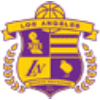Dwyane Wade decided to take his talents to the Chicago Bulls, leaving behind his home for the past 13 years, the Miami Heat. The problem was that the Bulls didn’t have enough cap space to give Wade the deal he wanted, since just about everyone expected him to eventually come to an agreement with Miami. In order to bring in their hometown star, Chicago would need help, and they were willing to pay for it.
Enter the Los Angeles Lakers.
With roughly $21 million available in cap space, the Lakers could take on a contract from the Bulls without sending anything back, as long as they received some kind of asset for their trouble. A deal came together quickly, with Chicago trading Jose Calderon, the point guard they received only weeks ago from New York in the Derrick Rose trade, into Los Angeles’ cap space.
As far as payment goes, the Lakers received a pair of future second-round picks. NBA rules stipulate that both parties have to send out something in the deal, so the Lakers will technically “trade” the rights to a player that they acquired long ago and never made it to the NBA. For all intents and purposes, they added Calderon, who is on an expiring, $7.7 million contract, and the picks for nothing more than a bit of cap space.
It also has to be considered that the Lakers were about $12.3 million beneath the league’s $84.6 million salary floor. Should they not add contracts to their roster at least equal to that amount, they would be forced to take the difference and divide it up amongst the players they have under contract.
In other words, the Lakers are spending at least $84.6 million on salaries this year no matter what they do, which means that the money they are giving to Calderon had essentially already been spent, only now they are actually getting something for it.
Sounds like a smart move, but what, exactly, did they receive?

Calderon is a 34-year-old point guard who hails from Spain, and has spent the last 11 seasons in the NBA playing for Toronto, Detroit, Dallas, and New York. His defense was never great, but now that he is well into his 30’s it’s “X-Men Origins: Wolverine”-level bad. Knicks fans certainly weren’t sorry to see Calderon go after watching him get torched night after night for the last two years.
However, that doesn’t make him completely useless, either. Calderon hangs his hat on his ability to effectively and efficiently run an offense. In fact, he’s so good at playing mistake-free basketball that Chris Paul and Mike Conley were the only point guards in the league with a better assist-to-turnover ratio last season. Not bad company to be in.
On a young Lakers team that will be learning a new offense, that kind of steadying presence will definitely be valuable.

Calderon will most likely be replacing Marcelo Huertas as the team’s backup point guard, who earned a place in the hearts of Lakers fans last season with his imaginative and flashy passing. Both are very capable of running an offense and struggle on defense, but one key area suggests that Calderon will be a major upgrade as a backup point guard: shooting.
Huertas certainly plays with more flair, but as a 26 percent shooter from three, teams were more than happy to back off of him and focus on cutting off passing lanes, which largely killed his effectiveness.
Teams won’t be able to do that with Calderon, who has shot a scorching 43 percent from deep over the last four seasons. With Lakers Coach Luke Walton’s offense requiring space to operate, the upgrade from Huertas to Calderon should be a big help in opening up the paint and creating driving lanes. Additionally, with his vast NBA experience with multiple organizations, Calderon figures to be an excellent mentor for young guards D’Angelo Russell and Jordan Clarkson.
Russell, in particular, struggled with turnovers last year, and practicing with one of the best in the league at taking care of the ball certainly won’t hurt.
As beloved as Huertas is, making the switch to Calderon is a no-brainer based on what they bring both on and off the court.
Calderon alone makes the deal worthwhile, but the two second-round picks the Lakers also received make the deal an absolute home run.

Second-rounders may not be as value as firsts, but they still can be a major asset if used properly. After all, the Lakers landed Jordan Clarkson in the second-round. It’s rare to find a star there, but solid rotation players can absolutely be unearthed.
The picks are especially valuable considering the Lakers still owe two first-round picks as a result of the Steve Nash and Dwight Howard trades and one second-round pick from the Roy Hibbert trade. The picks added in the Calderon deal help to replenish their supply somewhat, which is crucial because draft picks are often the go-juice that makes trades happen in the NBA.
Each pick is an arrow in the quiver of Lakers GM Mitch Kupchak, and the more arrows he has the better chance he has of eventually hitting the bulls eye.
All things considered, the Lakers did a heck of a job by adding a player who fills a need along with a pair of draft picks, all essentially for free.




